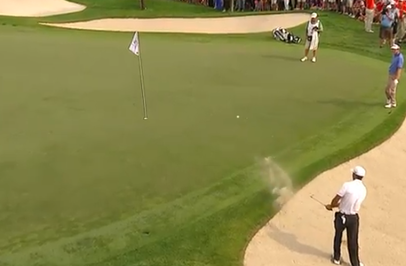 Ok so you want to learn how to be a pro golfer. You watch golf on television every week and watch PGA and LPGA tour players battling it out for huge purses and you want to be part of it. Well good for you! But before we begin, and just to be clear, what you want is to make your living playing in golf tournaments for prize money right? This is quite different from becoming a golf professional who works in the golf industry as either a golf instructor/coach, golf shop retailer or in some aspect of golf club management. In our article today we’re talking primarily to golfers who want to learn how to be a pro golfer - who want to travel and compete for prize money, and get good enough to play on a major professional golf tour. Professional golfers are a growth industry and many young male and female golfers from every corner of the world are now considering this career choice over many others. And I do mean career choice, as any golfer contemplating a life as a professional golfer must realize that you have to be in it for the long haul. What do I mean when I say long haul? You'll find out by reading on. To be a professional golfer you have to love golf and the idea of competing in tournaments so much that you will devote a large part of your life to it. This is not a decision to take lightly as the failure rate is extremely high in professional golf mostly because of the lack of information and education available that will help you to make an informed decision.  Preparation + Hard Work Will Trump Talent “If comfort is your goal, your next level of success is not in your future.” – Bill Bachrach Let me be clear up front with you that the failure rate on professional golf tours is not so much because of the lack of ‘talent’ of individuals (which is a very convenient excuse for why so many fail). Its much more about the meticulous preparation and hours you need to invest each and every day into your golf practice and play-well before you change your status from amateur golfer to professional golfer. Yes you have to have a very high playing standard to make money on the men’s and women’s professional golf tours but this has a lot more to do with the management of your game in the development years leading up to the time you make the choice to compete professionally. You have to manage your game so that you can continually lower your competitive score average even when your golf scores are already around par or better. Fortunately that is where we come in. At Pro Tour Golf College we’re in the business of educating amateur golfers about how to become a pro golfer and what is required to make the leap from amateur golfer to professional golfer as smoothly and easily as possible.  Step 1. Get Your True Golf Handicap Down Your true golf score average is your golf score against par, with every score you produce in golf tournaments counted. Yep, you have to put every card on the table as you’re developing your game-not just your best score cards. The year that you decide to turn pro you will have achieved a score average in important amateur tournaments of 71 or better. You will need a score average at least this low to be able to make the cuts in the pro tournaments you play in, and anything higher than this will mean that you won’t make any money, but it will cost you plenty! The amateur handicapping system will be your biggest handicap if you just put your best cards in. Don’t practice this bad habit that we see is an accepted practice in amateur golf. We don’t care what your amateur ranking is; but we do care what your competitive score average is. You have to count every golf score you have in amateur golf tournaments (good or bad) and anything less than this and you’re kidding yourself about becoming a successful professional golfer, as the professional golf tours only pay you when you produce consistent low scores. If you practice only putting your best score cards in to get your handicap down and your ranking up, then this will catch up with you later on. Your responsibility and that of your golf instructor/coach is to keep developing ways to lower your true competitive score average, and this is the biggest challenge you will face in becoming a competitive professional golfer. You need to build golf practice systems that drive your golf scores down, and you also need to be patient enough to give these systems time to work for you. Have a look at the following image showing Tiger Woods competitive score average over ten years (2003 – 2013) and note his consistency from year to year, and notice more importantly how he is able to keep bringing his score average down when it bumps upwards. He is now in his late-thirties and is still working hard to push his actual score average down so he can win golf tournaments. I ask you to take particular notice of how Tiger has lowered his competitive score average by 1.89 strokes per round from 2010 (70.77) to 2013 (68.88). This is his true ability in golf and what makes him arguably the greatest golfer ever!  Step 2. Get Professional Help If you’re serious about learning how to become a pro golfer then don’t make the mistake that many young amateur golfers make and try to do it all on your own. It is not enough to put long hours of practice in to develop your game, you need professional help (especially in your mid-teens) from trained and experienced PGA and LPGA instructors who are dedicated to helping you build a strong golf performance platform well before you turn professional. This requires that you get coaching on a weekly basis from professional golf instructors who have lots of experience working with elite golfers. We are not talking about basic golf instruction, what we’re talking about is advanced golf instruction with detailed long term training plans and systems for developing your golf skills and playing ability to a very high standard.
What you don’t want to do in your first cycle is to take golf instruction advice from well-meaning club members or even your relatives who have little to no experience working with advanced golfers. This will not help you, and is likely to set you backwards with your golf development.  Step 3. Four Year Planning and Development Cycles Olympic coaches work in four year cycles and so should you as this will help to lay out your long-term pathway to golf improvement. By thinking of your first development cycle as four years (16 to 20) you can focus on yourself so you can develop and improve your golf skills, playing ability and lower your score average, and worry less about what the other junior golfers in your age bracket are doing. This is a big problem for many young golfers and their parents where they compare their performances in golf tournaments against others instead of focusing on a long term plan of gradual improvement. Our studies of top professional golfers show that in most cases they develop into top level professional golfers after a minimum of two cycles of four years. This means that once you get onto a professional golf tour it is likely to take you up to four years to start making regular checks and another four years to start contending in - and winning golf tournaments. Study our images below to understand what we mean. Notice in every example below how we have the preparation and development cycles which lead into the competitive phases? It doesn't matter when you start, the point is that you start and realize that it will take longer than you think to become a pro golfer, who can make money consistently on a professional golf tour. In the first image we call the this young champions pathway which explains how the Tiger Woods, Rory McIlroy and Rio Ishikawa and Lexi Thompson got so good at such a young age. In this example they all turned pro in the third cycle and won tournaments pretty quickly. The thing to understand here is that in every case the young champions already have years of competition and experience by the time they turn pro. They just specialized at a much earlier age than most. (Click on the images to make them larger) Notice that we describe the first cycle as your preparation and development cycle. This is the cycle where you work hard with your golf instructor on turning your long-game, short-game and putting skills into solid habits, and it is also where you will experience the most improvement in your score average over the three cycles. Eight years of professional golf before you reach world class is not unusual; but we have found that the majority of amateur and professional golfers never think this far in advance. Our argument is that to play golf at such a high standard requires many years of planning and dedication, and trying to force yourself to become a top level golfer in the short-term is probably going to hold you back. If you find it hard to believe that it can take 8 years or longer then take a look at the following image showing the top 20 ranked golfers in the world (As of March 24) and their average years as a professional golfer is 12.6 years. Just 5 of these golfers have been a professional for less than 10 years. Next week we'll continue with steps 4 to 7 of "How to Be a Pro Golfer: The 7 Steps You Must Take to Make it."
So thanks for reading and we hope you enjoyed it. Lawrie Montague and David Milne - Pro Tour Golf College Your Success On Tour is Our Business 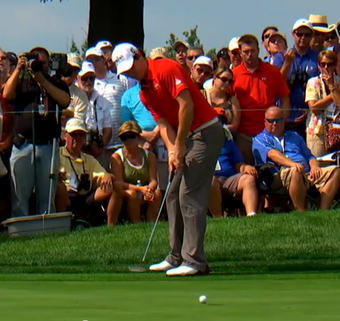 Without a doubt it's the club that is most used by all golfers, be they tour players or social golfers. For tour players who know how to break par on a consistent basis, they use the putter between 40% to 45% of the total strokes they make in a round of golf. An example is Rory McIlroy in his awesome year in 2012 averaged 29.27 putts per round and a stroke average of 68.87 per round. That makes a percentage of putts verses all other shots 42.50% to 57.50%. But how important is that statistic? Well lets have a look at the hottest golfer on the planet right now and World Number One Tiger Woods. The journalists and TV commentators are talking about his improved swing and the work he has done with swing coach Sean Foley that is contributing to his current form. And although there is certainly some improvement, its not all golf swing that has transformed Tiger's ranking from outside the top 50 to World No.1 once again in his career. But lets look at the statistics and find the truth about where the statistical difference is and prove that the flat stick is the most important club in the bag.  Tiger throughout his career has never been ranked in the top 50 in driving accuracy and that includes the period 2000 to 2002 and 2004 to 2008 where he was the dominant player by far. In fact over the last fifteen years he has only been inside the top 100 four times. His winning percentage was unbelievable at nearly 30% and unheard of and he's back to that amazing percentage once again. Between 2004 to 2008 Tiger was always ranked 6th or better on tour in putting. I am making the comparisons from 2004 on-wards as that's when the tour started to use 'strokes gained-putting' which accurately calculates putting on it's own without green-side skills and approaches influencing the outcome. The worst year was 2010 when his strokes gained-putting stat was .033 to the field and ranked 109th. In 2013 he is 1.476 in stroke gained-putting and that equates to two shots a round better than 2010. And guess what; his stroke average is almost a full two shots difference 68.33 (adjusted) in 2013 compared to 70.32 in 2010.
So not a lot of difference. Most of the best players who have played the game from Ben Hogan, Sam Snead, Arnold Palmer, Tom Watson, and Nick Faldo's career's faded when their putts stopped dropping. And it looked like Tiger's was as well but that slide has been well and truly reversed and he has been at his very best with the putter and winning tournaments in 2013. Tiger is currently ranked 2nd on the PGA Tour for the 3 Putt Avoidance Putting Statistic with just 4 three putts for 288 holes played. Tiger Woods knows how to break par and I think you'll agree that this statistic explains to great extent why he's putting is so good. It's not just about making the short putts, you need to keep the 3 putts of your card as well. Practice the 3 Putt Avoidance Drill (above) as this is one of the keys to great putting. So just like Tiger, spend a lot more time practicing your putting skills, and make it the best club in your bag and just like Tiger your competitive score average will improve overnight.
In my article next week I'll show you "How to Break Par: The Putting Drills Used By The Top Pro's On Tour." David Milne and Lawrie Montague - Pro Tour Golf College Your Success On Tour is Our Business 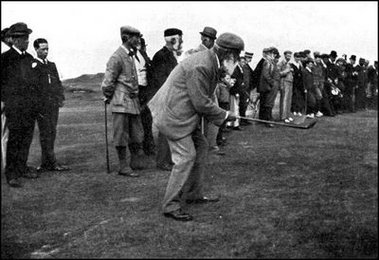 At certain moments in the game, the player experiences overwhelming fear, enormous pressure, and unbearable tension. The outcome of the game is at stake and the player feels that he is required to perform at his best, or all will be lost. At this stage of the game, some are hailed as heroes and some are said to have “frozen” or “choked.” How does a game have the power to produce a physiological response almost identical to that which occurs in a true life and death situation? A person’s perception is his reality. If a situation is perceived as life and death, the physiological response will mirror those of life and death. And when a game is perceived as life and death, the game is no longer a game. If such feelings are unacceptable to you, you must explore what the game means to you. You must define why it is that you play. If a win produces elation, you may wish to examine what it is you have won. If a loss produces despair, you may wish to examine what you believe you have lost. 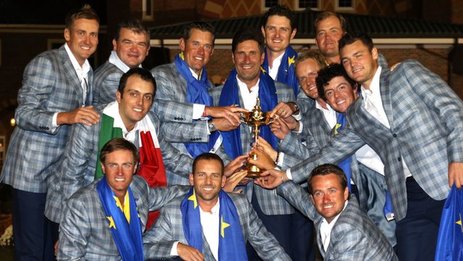 Do you truly believe that a trophy, a cup, or some clever mix of steel and plastic has the power to incite such an intense physiological response? Is it about the trophy? Or is it something else? Is it about the ranking? Or is it something deeper? Freezing in what is perceived to be the critical moment in a game is a response to overwhelming fear. For such a fear to arise, something enormously valuable must be at stake. If you feel such a fear, I assure you that the game you are afraid to lose is not the one you think you are playing. Kapil Gupta, M.D [email protected] www.siddhaperformance.com 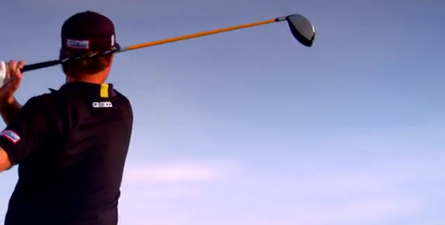 Is there such a thing as a "pro tour golf swing?" Do the tour pro's who make their living striking golf balls down fairways and putting golf balls into small holes have a golf swing secret that they keep to themselves? No because if you think about it, there are literally thousands of male and female professional golfers competing in small to large tournaments around the globe at any one time and the one thing we can be absolutely sure of, that like our fingerprints, no two of them are the same, so therefore no two golf swings they produce can be the same either. What there is however is a Tiger Woods version of a pro tour golf swing, there’s a Phil Michelson version, a Stacy Lewis version and so on? They are all different in style, and they all function slightly differently because the physical makeup of these professional golfers is different. Some professional golf swings are shorter than others; some are faster than others; and some are radically different to others. And the reason behind this is very obvious, as I said, we are all built differently.  We have two hundred and six bones in our body and more than six hundred muscles, and the muscles and their tendons are attached to these bones in slightly different places on each golfer which influences the body to move differently from one golfer to the next. And when we move our bodies to swing a golf club, the amount of flexibility we possess in and around our joints will have a significant effect on how we move our golf club, not to mention how we also use our physical strength within the golf swing as well. We also have thirteen major joints in our body that can and do move within three dimensions (4 dimensions if you include time) making every golf swing motion totally unique. That’s right; no two golf swings we make are the same either! Tall and thin golfers will swing the golf club quite differently to short and round golfers, who will swing it differently to strong muscular golfing types. So I don’t think we can say that there is a "pro tour golf swing" as such, however I believe that there are a few golf swing principles that every professional golfer and competent amateur golfer practices and develops that influences consistent golf shot-making compared to the average recreational golfer. Now this is where confusion reigns supreme in golf, because these principles I mentioned are packaged up and learned in very different ways. Every golf instructor/coach has their own idea of what these principles are and also the sequence for when they introduce them into golf lessons. The Rule of Three’s in Golf Swing Development Experienced and successful golf instructors know that there are only three primary elements involved in the playing of golf. (Not including the golf course, type of equipment and weather etc.) 1. There is a golf stroke 2. There is an impact or collision with a golf ball 3. There is a resultant ball flight From driver to putter this is the process that occurs from one shot to the next. Now every element in this process is as important as every other, but the preference of the golfer and their golf instructor will dictate how they are learned and practiced.
Every golfer ultimately learns in his or her own best way and as such there are many ways to swing a golf club however we must never lose sight of the fact that in every pro tour golf swing style, the impact and ball flight are very similar from golfer to golfer.  It is easier to learn to build your pro tour golf swing style the way you learn best and your golf instructor will identify your best way and facilitate the golf swing learning process by exploiting your primary ways of learning. And one thing is certain that regardless of which way you learn to build your golf swing, all golf swing development will influence another set of three elements; 1. How and when the club-head accelerates within the swing 2. How much the club-face rotates within the swing 3. What direction the golf shaft travels within the swing The pro tour golf swing principles that you build into your golf swing should influence the golf swing to accelerate the club-head at the optimal time in the down-swing to maximize the distance the golf ball can be hit. The pro tour golf swing principles that you build into your golf swing will minimize the amount of club-face rotation to maximize club-face control through impact. The pro tour golf swing principles that you build into your golf swing will influence the golf shaft to travel with a minimal amount of variance between the back-swing and forward swing phases. So in summary, the pro tour golf swing that you build with the help of your golf instructor/coach can be thought of as any golf swing that can do the following three things consistently; a) Produce a high degree of control over the golf balls trajectory b) Produce a high degree of control over the golf balls curvature c) Produce a high degree of speed as the golf ball departs from the club face So Tiger Woods and his fellow golf tournament professionals all have something in common; they can all control the trajectory, curvature and ball speed consistently from the club face which is the key fundamental of the pro tour golf swing style. Learn to build your golf swing so that you master the rule of three's and your shot-making consistency will raise to levels you've never experienced before, and your golf score average will move down to a level that makes you really competitive in golf tournaments. Thanks for reading our articles each week and we hope that you will share them with your friends on social media sites as we really appreciate the support. We will continue to share our knowledge and experience to help you to lower your competitive score average. Lawrie Montague and David Milne - Pro Tour Golf College Your Success On Tour is Our Business "When I prepared properly, then all I had to do was control myself and put myself in a position to win by sticking to the game plan" - Jack Nicklaus  1964 Crosby Pro-Am Photo: Monterey County Herald The course management plan starts well before you even get to the course during tournament week. As Jack Nicklaus did during his career and others have followed, he rarely played a tournament the week before a major. He didn't take the week off but rather turned up to the tournament course early and did his course preparation. He started charting golf courses in 1961 at the US Amateur at Pebble beach which he won. "When I prepared properly, then all I had to do was control myself and put myself in a position to win by sticking to the game plan" As I mentioned the planning starts before tournament week. An assessment of your equipment make up is the first thing that you should look at. What I mean by that as an example is do you need an extra wedge (like Tom Kite who carried four wedges) in the bag to fill in the distance gaps especially when the par fives are unreachable? Or the course has plenty of shorter par fours that require precise distance control with your approaches. Possible change to the bounce of your wedges for harder conditions (less bounce recommended) and more bounce for wet conditions or the sand in bunkers are very fluffy and soft. Another consideration is adding another rescue club in place of a long iron when the greens are not receptive to long irons coming in low or if the rough is thick as rescue clubs glide through the rough much easier to use then a long iron. A heavier putter for slow greens and vice verse for fast greens is something you can look at. In 1976 Raymond Floyd at the US Masters added a 5 wood to his bag and left his 2 iron out so that he could hit his second shots into most of the par fives and hold the green. Well not only did he win but equaled the tournament record at the same time.  The next important task is to get or make a yardage/meterage book and check all distances are accurate. These days there are no excuses as laser devices make that task hassle free. In Nicklaus's days pacing or stepping out the course was the done thing until measuring wheels was later used. Now gathering local information like prevailing winds need to be added as certain locations on the course being able to judge the wind can be very tricky and difficult to pick especially when large trees can make the wind swirl and confuse you. Mark each page of the book with an arrow indicating the direction of the prevailing wind. All courses have certain idiosyncrasies that when reveled can make a big difference and to find this out ask the local professional.Things like where putts tend to break and where pin positions are favored can be very valuable information to test out in practice rounds and apply in tournament rounds. From the tee always get a measurement to the start of all fairway bunkers (or other hazards) and also the distance to carry them. This is necessary as tee markers can be moved closer on some days and that could bring the hazards into play or allow you to carry over the them when the conditions are favorable. Note also which side of the fairway gives you the best look to the green.  For your approaches into the green the distance to the front edge is a given but always get a second or third "front" measurement when there are bunkers guarding the front. So the front of the green when the pins are tucked behind the hazards are much further then the actual front edge so you can take the right club to attack the pin when you have your 'A' game going. And when you don't the center of the green is the percentage play. The one thing you should always do is divide the green into four quadrants. By doing this you can map each quarter by gradient and which way the grain of the grass grows and is going to influence your putts. This will help immensely with reading the greens to get the correct line and speed of the putt. Mapping the slopes and plateau of each green helps you to not always go at the pin. The safer option is to use the slope or backstop (slope behind the pin) to guide your ball closer to the hole especially when the pin is in a "sucker" position enticing you to go for it and the penalty of a double bogey or worse if you miss the shot. Most amateur and professional's that I know have a plan of how they would play a course but most seldom stick to that game plan. It's always easy to stick to the plan when things are going well but can you do it when your round is not going how you want it to? Like all areas in your game it's how well you prepare and under pressure "Trust the Process" and that includes executing your game plan that will give you the best chance to post a competitive score over four rounds. It's of no use if you do it sometimes because it will break down when you need it to work in the tournaments that are of importance to you. As Jack Nicklaus said "The difference between being nervous and scared is being prepared". He should know as no one has done it better than him! David Milne and Lawrie Montague - Pro Tour Golf College Your Success On Tour is Our Business  If you go back a decade or so, the mention of cardiovascular fitness and golf in the same sentence was relatively unheard of. Since then, with the growth of the golf fitness industry, the benefits of cardiovascular fitness and the need to pursue this has been sold to golfers as a key to improving their game. So what physical attributes do we require for golf?  Firstly we need muscular strength to perform the golf swing, and secondly cardiovascular fitness to walk the course (which is 6-7+ kilometres over an often undulating surface), albeit in a leisurely 5 hour or so time frame. So as long as we are ‘fit’ enough to have adequate muscular recovery between shots and to maintain the level of mental concentration required for each shot, our cardiovascular fitness needs are really only mild to moderate. Finding an additional 40 minutes per day 3-4 times per week just to focus on improving your cardiovascular fitness, on top of an already tight training schedule, might be a struggle. With this in mind it is much more efficient to combine your golf specific strength and mobility exercises with your cardiovascular program.  Try decreasing the rest period between exercise sets, increase your exercise intensity and add some short sharp aerobic intervals between sets, all with the aim of keeping your heart rate between 60-80% of your maximal training heart rate for the 40 minute session. There are those of us who enjoy pure aerobic training and will therefore pursue it as a means of enjoyment and stress relief. So what is the best form of exercise for golf? They all have their pros and cons. Jogging and walking provide the important ‘ground reaction force’ and strengthen your legs and core, however as a golfer you already spend countless hours on your feet which puts increased stress through your knees. Cycling rests these joints from weight bearing stress however doesn’t necessarily do much for your glutes or core (with the exception of ‘out of the saddle’ riding). Swimming has no ground reaction and may tighten you through your anterior chest, but can be great as a break from weight bearing exercise. So exactly how much cardiovascular training you perform is dependent on what you are doing it for. If you are time poor, combine it with your strength and mobility training. If you need pure aerobic training for enjoyment and stress relief then make sure you factor in how it may affect your golf game on other levels. Martin McInnes - GolfFit Physiotherapy www.beaufortphysio.com.au/golffit 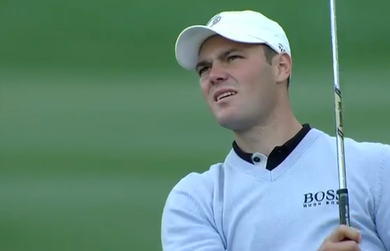 PGA and LPGA Tour professionals are the product of thousands of hours of practice and dedication to their craft. They are a rare breed of men and women who strive to play golf at the very edge of excellence. For many the task of competing many weeks of the year takes a heavy toll emotionally, physically and mentally because of the ever increasing standards they have to meet to remain competitive. There is a very fine line between good and great in professional golf and in today’s article I’m going to help to define just how close this line is. It might surprise you to know that the difference between a good professional golfer and a great one is just a stroke or two per round, but the key to this is not in understanding that the outcome is just one or two strokes per round but rather the skills within the score so to speak.  The Skills Within the Score At Pro Tour Golf College we often talk with our students about the ‘skills within the score’ and their influence on producing lower-more competitive golf scores in tournaments. The skills within the score are any golf skills that have an impact on improving your golf score average. Notice I said golf score average? What we’re talking about is a long term view of golf improvement that will push an already low score average lower which is precisely what elite amateur and professional golfers have to do. It’s not what you do from round to round that is as important as what you do from the information you obtain from 20 competitive rounds or more that will help you. You need a big picture look at your game to make decisions about the direction of your game. In our experience too many hasty decisions are made by elite golfers after a poor round or two, and this just isn’t enough information to make decisions that influence a lower golf score in the future. The skills within the score are sometimes hidden from view with a short term perspective and will only reveal themselves after producing enough data to extract the information from its hiding place. That is why it is important for you to compile enough rounds to really start to understand your weaknesses and then it will be easier to design an improvement strategy that influences a lower score average. 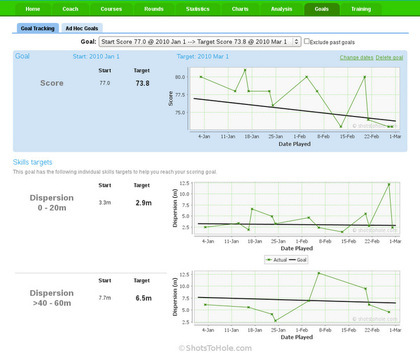 There Are Stat’s and then There Are Stat’s If you are a conscientious elite golfer you will ideally be already tracking all your golf performances with some type of golf statistics program of which there are many available on the internet. The starting point of generating change is to identify accurately where your game is currently and a statistics program can be very helpful. However when you get to a very low handicap or you know longer have one then basic statistics just won’t help you much at all. Hitting sixty percent of fairways doesn't tell you a whole lot about your tee-shots and where they went. Hitting 60 percent of greens in regulation doesn't tell us how far you hit your ball from the hole and where you hit your approach shots from, and 30 putts doesn't explain the distance you putted your putts from on each green. There’s just not enough information available with basic statistics to make better-more accurate predictions that will influence lower golf scores. The best way to really help your game is to use a program that can track every golf shot you hit on the golf course and then determine which of your golf skills is keeping your competitive golf score average higher than you would like. From the tee you want to know and be able to plot exactly where your golf ball went. With this information you can isolate particular trends within your shot-making that can help you and your golf coach/instructor to work with you on developing an appropriate strategy for improvement. I have spent a great deal of time looking at golf statistics programs (like I said there are many) that can help elite amateur golfers and professional golfers understand and quantify their results so they can bridge the performance gap and produce lower golf score averages. Look at the example below where I have compiled some data from the PGA Tour website showing a player ranked 10th, 100th and 150th on tour in the following categories. Notice in these five performance categories how little they tell us about what the golfer did to produce these averages? Many of the statistics programs provide you with little more than this, which makes the predicting part of your golf development cycle difficult to manage. How difficult do you think it would be for the 100th ranked golfer with a goal to become the 10th ranked golfer in greens hit in regulation (4.17 percent improvement) if all he and his coach could go off was the percentages stated in the previous table? Clearly you need to know the variable/s (the skills within the score) that would influence the difference in these outcomes, and that’s where advanced statistics programs like "Shots To Hole" can help you. (See video below) Now take a good look at the next image (below) and notice the difference in statistics. Here I've compiled 10 different statistics that I think you will agree provide you with a great deal more information pertaining to skill improvement. From the long game category we can isolate tee shots that miss the fairway left compared to right. The green's hit in regulation statistic now allows us to see how effective we are with long irons and hybrids compared to our middle and short irons. The around the green statistics now tell us out of sand how far we hit the ball from the hole on average when we’re within 30 yards of the putting surface.
Take a look at the how specific the scrambling stat is now. We can isolate shots from a specific distance and measure the proximity to the hole and also how many putts were made from this distance range. Finally the putting statistics have gone from the total number of putts per round to how many putts were made from 4 to 8 feet and from 10 to 15 feet. Also, we can calculate the percentage of three putts to determine whether our approach putting outside of 15 feet needs special attention. This additional information provided by advanced golf analysis software programs is crucial for elite amateur golfers and professional golfers today to design highly specific and relevant training programs to reduce your scoring average in tournaments. The question you need to continually ask yourself about your quest for continuous improvement is "how do I know that what I'm currently practicing is right for me?" The best answer to this question is to find a way to precisely track, test, measure and manage your game with relevant golf statistics that can help you to isolate the key variables that will drive your golf score down faster than any other way. Lawrie Montague and David Milne - Pro Tour Golf College Your Success On Tour is Our Business  Jack Nicklaus was the first professional to chart and document yardages of golf courses before he played golf tournaments. He had many outstanding skills like hitting his drives long and straight; towering irons that landed softly on the firmest of greens, and making the crucial putts under the most intense pressure. But he was known best for his golf course management skills especially by his peers. Gary Player who played in the same era as Jack Nicklaus and referred to him as "The greatest mind the game has ever known." Nicklaus when asked the reason why he won more Majors (18) then any body else he answered "I failed less than most of my competitors." This was mainly due to his pre-tournament preparation which allowed him to forecast the winning score within one shot most times. This allowed him to plan how he would play each shot and hole under all sorts of different conditions. Every modern player amateur or professional are all now armed with their course guides filled with every bit of information required to negotiate around the golf course. Now a days with the help of Aimpoint putting system and its trained instructors players are learning how to chart the greens accurately and taking green-reading to another level. This is all well and good having all this information, but using it is another skill most elite golfers don't do well. So how can you become better and take your scoring game up a notch? 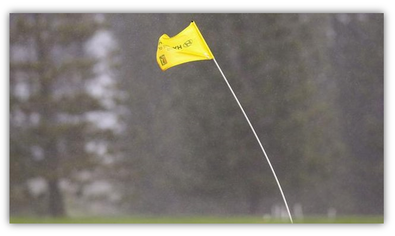 The first thing to be aware of is that the course conditions change each day. The course on Monday and Tuesday in the practice rounds are quite different to what you will experience on Saturday and Sunday. In my estimation adapting quicker to the conditions during a round is the number one skill that if you master it will save strokes. This means that when you get a yardage/meterage for an approach shot you have to factor what the ball will do when it lands on the green whether it's going to spin or release. I know you are saying "well that's common sense" but it's been my observation at tournaments most golfers don't adjust to the first bounce of even a chip shot until it's too late and the round is almost over. Especially when the greens start to firm up like they do later in the day and week. 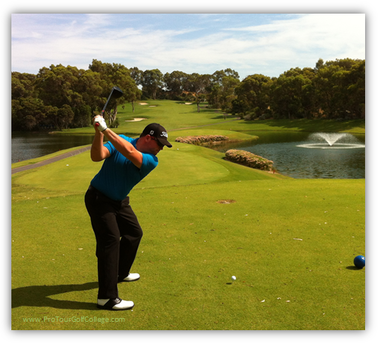 Having an alternative strategy for a tee shot (when the prevailing wind changes) is critical as a hole that requires respect into the wind can quickly change when the wind is in your favor - especially par five holes that can give up birdies and the occasional eagle. Being able to adapt quickly to execute a good course management plan is a skill that you must have to do this successfully. Knowing and controlling the distance and trajectory of your golf ball is essential especially in windy conditions. Good shot shaping allows you to attack pin positions that are tucked behind bunkers and other hazards. Combine all these skills with the ability to stick to the game plan you have in place no matter what is, is a skill all by itself! Next week I will show you how to put a course management plan together that will shave strokes off your scores. David Milne and Lawrie Montague - Pro Tour Golf College Your Success on Tour is Our Business  I have never seen an athlete who did not live in fear. He walks with it. He sleeps with it. It has become so much a part of him that he does not know where his self stops and the fear begins. Some consultants call it anxiety. Others call it pressure. You can call it what you like. For me, it is fear. Its power is enormous. It is as old as man. The performance community, coaches, psychologists, and the athletes themselves are intent upon creating massive walls to shield the athlete from it. These walls come in various forms: rituals, aphorisms, routines, self-talk. Legions of athletes subscribe to them. Who can blame them? It is natural to arm yourself against such a fastidious force.  Who can blame the coaches and the psychologists? For they are simply trying to protect their athletes from this tremendous force. In fact, I applaud their tenacity and commitment. My only question is: why continue to fight a war that you cannot possibly win? In fighting against fear, the athlete will only enslave himself. In using clever tricks, he will only delude himself. The reason that man fights is because he shies away from the ultimate battle: The battle of understanding. Where is the coach that is willing to explore the nature of fear? Where is the athlete who is willing to explore, once and for all, what PRECISELY it is that he is afraid of? The answer may surprise him. Kapil Gupta, M.D. [email protected] www.siddhaperformance.com  Do you want to develop a more reliable, consistent and confident golf swing technique? I don't think there is a golfer alive that doesn't want to become more consistent and confident when playing golf. So what does it mean to be consistent at golf? Is it even possible to develop a consistent golf game? In this article I'm going to share with you a simple pathway to a more dependable, confident and consistent golf swing, which will give you more self-belief and certainty over the golf shots that you hit. Developing a reliable golf swing begins with a definition of what golf consistency means to you. For many amateur golfers it means to develop more positive and predictable results in their short-game and long-game. For others it's about achieving more consistency in their golf scores, which means reducing the distance between their lowest scores and their highest scores. Either way, acquiring more consistency and confidence in your game necessitates a change in your approach to how you go about producing results in your golf swing and score. When you think about consistency, what we're really talking about is any routine or ritual that is as regular as clockwork. Now this routine could easily be a routine that influences your thoughts, or your golf swing or a part of it, a putt, a chip or pitch, or in-fact any skill or part thereof that has a significant influence over your golf performances. 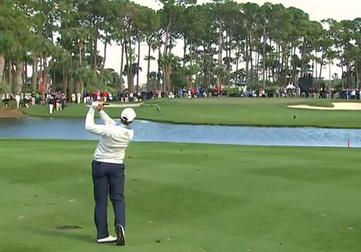 The Golf Swing Consistency Formula Building consistency into your golf game will be easier by understanding and applying the following simple formula. 'golf swing consistency = deliberate pre-shot routine x deliberate practice strategy' This formula explains the two key components you need to develop to build positive, steady and dependable consistency into your game. These two critical consistency components are: 1. A deliberate, well thought out pre-shot routine that incorporates precise club and body alignments prior to swinging the golf club. 2. A deliberate practice routine that focuses on incorporating the key aspects of your pre-shot routine into every practice shot.  A Deliberate Pre-Shot Routine What one undeniable factor sets pro's apart from amateurs? The answer apart from the obvious is a premeditated and precise pre-shot routine. A pre-shot routine is a well-planned and precise process where a golfer goes through a carefully choreographed sequence of movements prior to hitting his golf shot that ideally incorporates the following six factors;
When these steps are carefully and thoughtfully incorporated into your pre-shot routine you will be giving yourself the best chance of executing your golf shots confidently, successfully and consistently. A Deliberate Practice Routine Practicing your new pre-shot routine over and over again will take your pre-swing routine from a set of rehearsed conscious actions to an automatic mental-physical shift that guarantees that your golf shots will become more consistent as will your golf scores. When you practice hitting golf shots, carefully coordinate your routine so that it incorporates a clear decision as to exactly how you want your golf ball to behave as it travels to the target, followed by careful placement of your hands on the grip. Then aim the club-face before you aim your body, establish your stance line and upper body alignment. Once you have arrived at this division of your pre-shot routine you can simply swing away. This very precise sequence of events carefully thought out and assembled is the formula for achieving positive, steady and dependable consistency in your golf swing which will greatly increase your golf confidence, lower your golf scores and give you the consistency you have been searching for. Lawrie Montague and David Milne - Pro Tour Golf College Your Success On Tour is Our Business |
Archives
June 2019
|
Proudly Supported By
Copyright © 2011 - 2018 Pro Tour Golf College
Website Managed By Golf Performance Media
All Rights Reserved
Website Managed By Golf Performance Media
All Rights Reserved






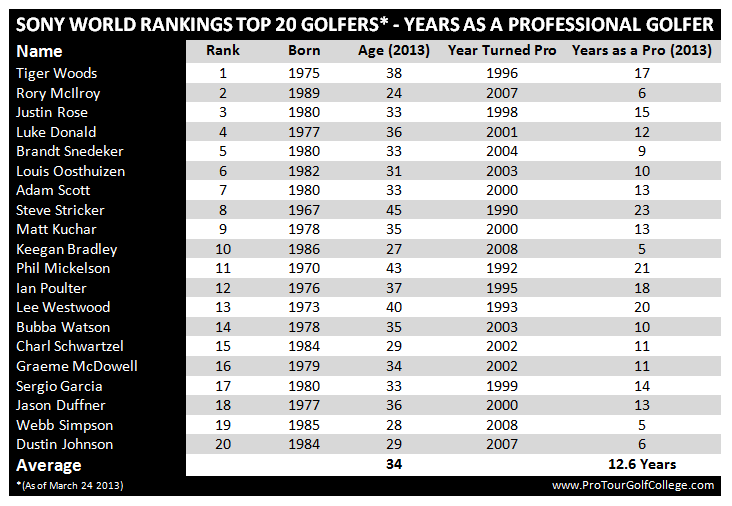









 RSS Feed
RSS Feed



